Last Updated on May 14, 2024 by Ecologica Life
Unfortunately, there is a good chance that the tea bags you use contain at least some plastic. Every time you make a cup of tea, the hot water can release millions of microplastic particles into your tea, and then into you.
In this article we’ll look at why most teabags contain plastic, and what alternatives are available if you still want to drink tea but don’t want the unwanted plastic in your brew.
Human blood may contain high volumes of microplastics
Table of Contents
Are You Sure That My Teabag Has Plastic?
We at Ecologica.life would rather be the bearers of good news, but unfortunately yes. We can say there is a high probability that your teabag has plastic.
This is not true of Every brand of teabags, but it is true of most teabags on the market currently.
Even though your teabag may feel and rip like paper, it is still likely to have plastic.
Types of Teabags
Pressed (heat-sealed) tea bags
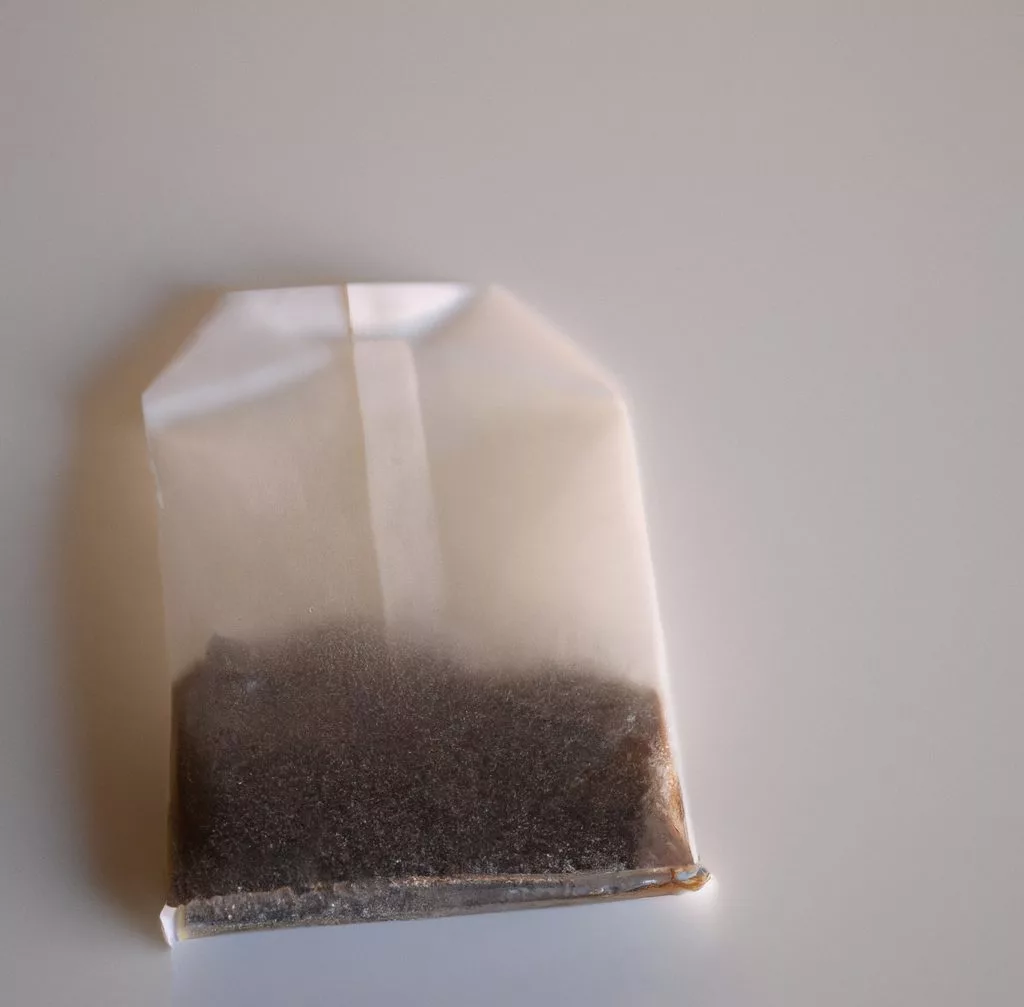
These are the typical plastic-filled square, rectangular, or occasionally circular tea bags with crumpled or pressed edges on all sides.
The paper does not stick together on its own; the two different layers of paper must stick together to hold the tea leaves inside. The layers are sealed together with plastic, not glue. If it were glue, the glue would just melt into the tea!
The plastic used to seal the layers is usually polypropylene but can be a mixture of polyethylene and a polyethylene copolymer. This plastic is woven in between the paper fibres, and melts when heated to seal the teabag.
Typically, these tea bags contain 20-30% polypropylene.
In addition, some companies choose to add a substance called epichlorohydrin to their paper tea bags to prevent them from tearing. This substance is classified as a possible human carcinogen (cancer causing agent). It is also known to react with water to from 3-MCPD, another possible carcinogen.
Silk teabags
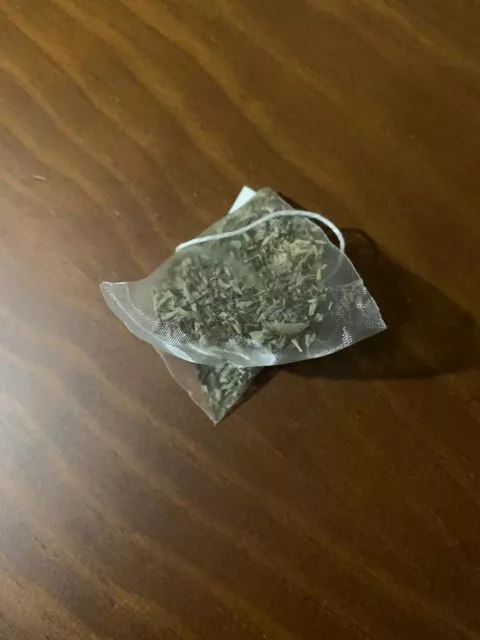
Despite their name, silk tea bags are actually made of plastic. Silk teabags are usually pyramid-shaped because the fibres are woven to give them the appearance of fabric.
These teabags are made from either plastic derived from fossil fuel-derived plastic (often nylon or PET, the same plastic used to make drinks bottles) or plant-derived plastic (PLA or polylactic acid, usually derived from corn or other plant starches).
You might be forgiven for thinking that plant-based plastic is OK, that it’s natural. Unfortunately, research has shown that even bio-based plastics such as PLA can be toxic. You can read more about plant-based plastics in our article.
Research has also shown that at brewing temperature, one of these silk teabags bags releases as many as 11 billion microplastic particles and 3 billion nanoplastic particles. If you are worried about microplastics, check out our article: Tips to avoid microplastics
String-and-tag teabags
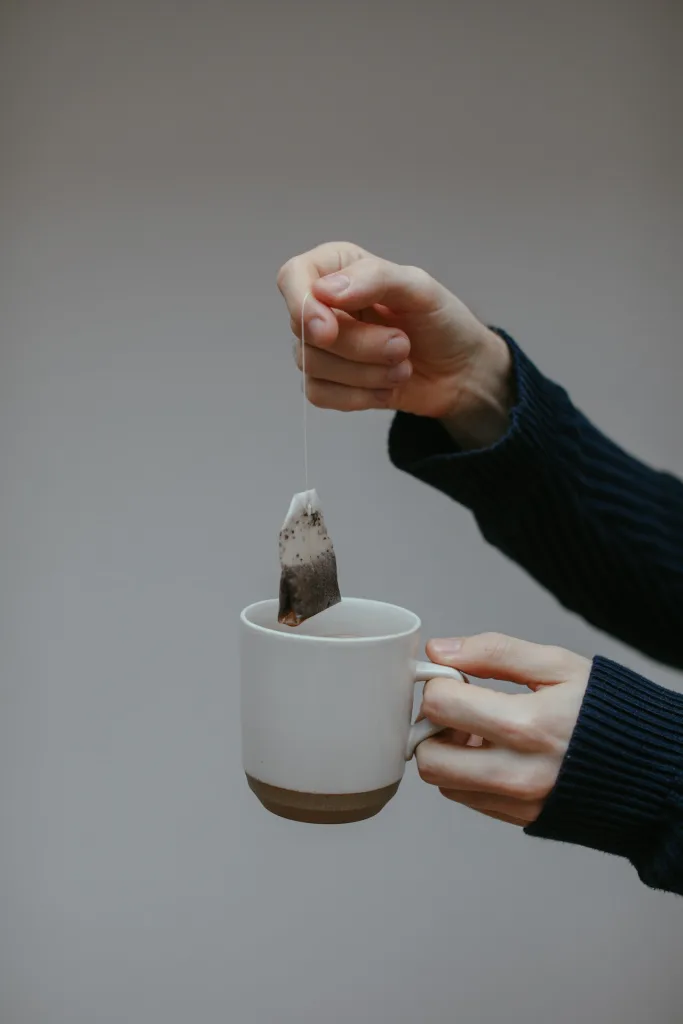
These teabags are closed by folding and stitching or stapling rather than heat sealing. This means that the filter paper used to make them does not need to contain plastic-polymer fibres.
However, many teabag manufacturers (including organic teabag manufacturers) still choose to reinforce their paper with plastic (polypropylene fibres).
Additionally, some companies crimp their teabags into this shape and then attach the string on after. The crimp is the tell-tale sign that the bag contains plastic. The string is usually stuck on, rather than sewn in. Even if it is sewn in, they may still use crimping with plastic.
Pure paper tea bags are more likely to tear and fall apart when left to steep in a cup of tea. Your tea bag probably contains some plastic fibres to make it more durable.
This short clip from a BBC2 documentary will certainly open your eyes if you’re interested in how tea bags are made.
Brands With and Without Plastic in their Teabags
Because the Ecologica.life audience is based around the world, we cannot provide an extensive list that will cover all our viewers. Below we have listed some brands that have committed to not using plastic in their teabags and some that have not.
Some brands which have committed to plastic free tea bags
These are the string-and-tag tea bags but check with the manufacturer as many brands still contain plastic. This information is based on our research and may have changed since publication.
- Higher Living Teas
- Tea Tonic, they only use paper in their tea bags.
- Pukka teas, the bags themselves are made from a blend of natural abaca (banana), wood pulp and cellulose fibres (although the envelopes are plastic).
Many brands that claim their tea bags are ‘plastic free’ actually use plant-based plastics.
If you truly want to choose a plastic-free tea bag, stay away from anything that is labelled as bioplastic, plant-based plastic, or corn starch (PLA), as bioplastic is still plastic (even if it is labelled as biodegradable or compostable).
Some Brands Which May Have Plastic
This information is based on our research and may have changed since publication.
- Abel & Cole own brand uses bioplastic from corn-starch (biodegradable PE and oxo-biodegradable).
- Aldi own brand.
- Asda own brand.
- Bradley’s (Ecologica.life has contacted them to ask them and will update you on the response here).
- Clipper, their pressed teabags contain PLA bioplastic.
- Co-op own brand 99 uses bioplastic (PLA).
- Lidl own brand.
- PG tips uses biodegradable plant-based materials for their tea bags, we are unsure of exactly what yet.
- Sainsbury’s own brand used bioplastic (PLA).
- Teapigs use bioplastic (PLA).
- Tesco own brand.
- Tetley.
- Twinings uses PP or PLA.
- Waitrose own brand. Their caffeinated teabags contain PLA whereas their decaf bags contain some plastic.
- Yorkshire tea.
Alternatives
If you do not see your favourite tea bag brand listed here, it may be time to contact them directly and ask. In the meantime, if you still want to drink tea without wondering if you’re getting free extra plastic in the mix, there are some alternatives:
Loose leaf tea
The most common way to make a cup of tea today is with tea bags, but this wasn’t the case until the 1950s. However, a plastic-free cup of tea can be achieved by using the traditional loose-leaf tea.
Buying loose-leaf tea avoids the problem of sealing plastic tea bags and creates less packaging overall, helping to reduce your carbon footprint. What’s more, the tea itself tends to be less processed and has more of its natural flavour as a result.
Whole herb tea
Some cafes have started to offer whole herb tea instead. Instead of using the leaves, the whole herb is used. This is often seen in the Netherlands where they offer fresh mint tea. Like loose leaf tea, it has the advantages of no plastic, much less processing and great taste.
How Can I Dispose of my Tea bag?
If you use completely plastic-free teabags or loose-leaf tea, you can dispose of it in your home compost for your sustainable garden. Unfortunately, even if your teabag claims to be biodegradable, if it contains plastic or bioplastic, it will not be home compostable. This is because certain conditions (temperature, pressure, presence of microbes) are required to biodegrade these materials.
So you need to check with your local recycling scheme to see if they have a separate bin for biodegradable waste. If not, you will have to dispose of it in your general waste bin.

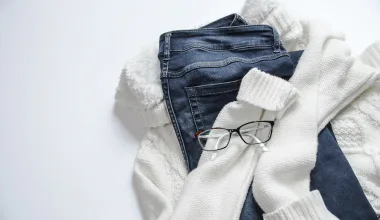

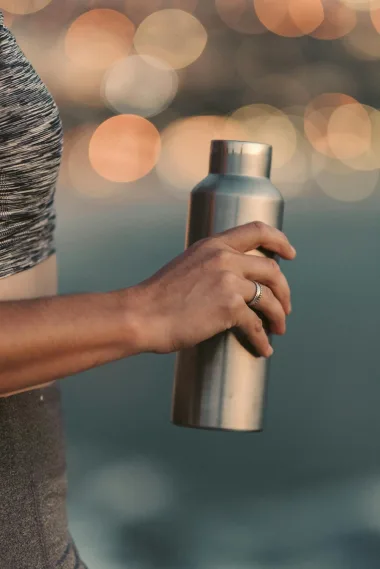
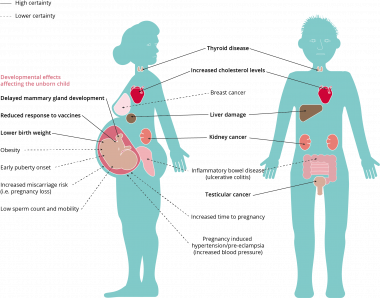




2 comments
Bonjour, la marque clipper bio dit sur son site ne pas utiliser de plastiques dans ses sachets…
Geraldine
Bonjour Francheteau. Clipper utilise des bioplastiques ou un PLA qui est dérivé de plantes plutôt que de pétrole.
https://www.clipper-teas.com/tea-talk/plastic-free-tea-bags/